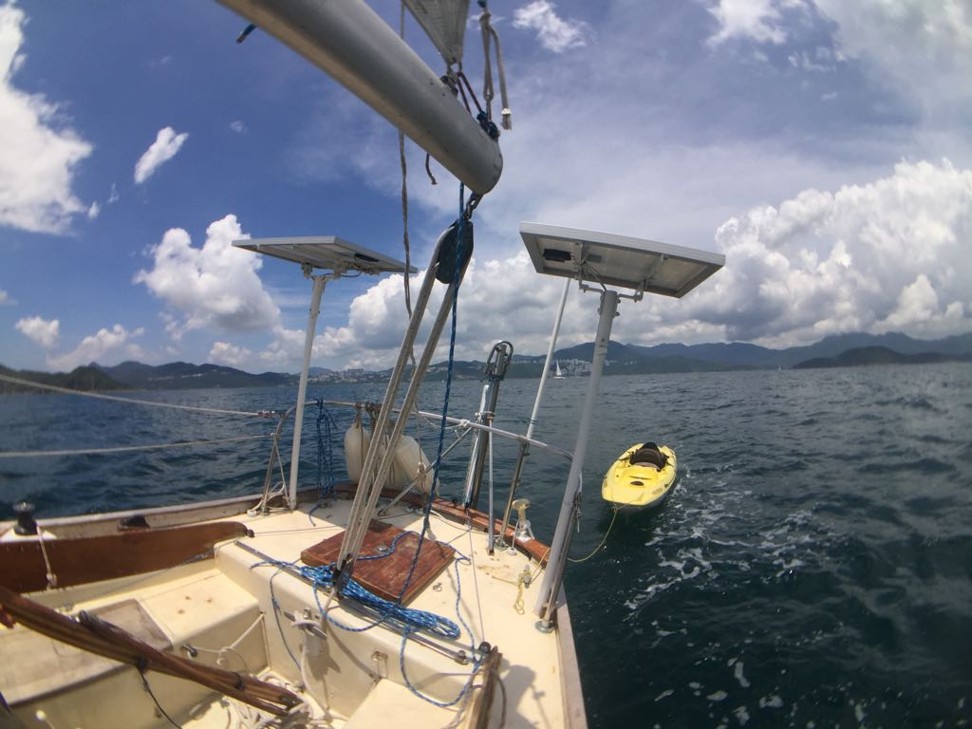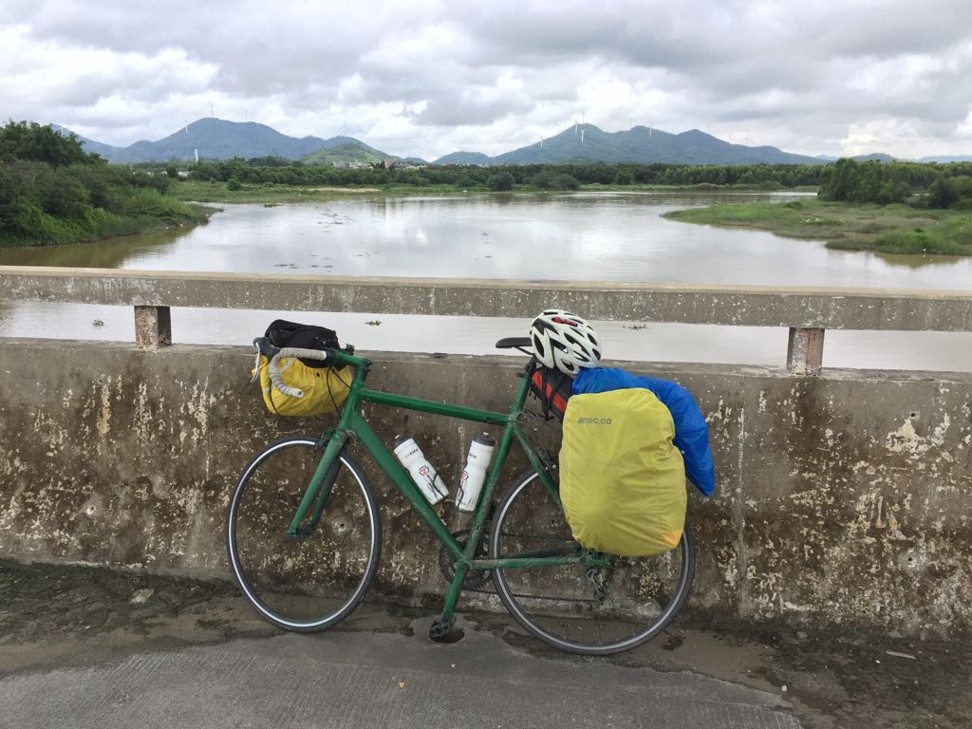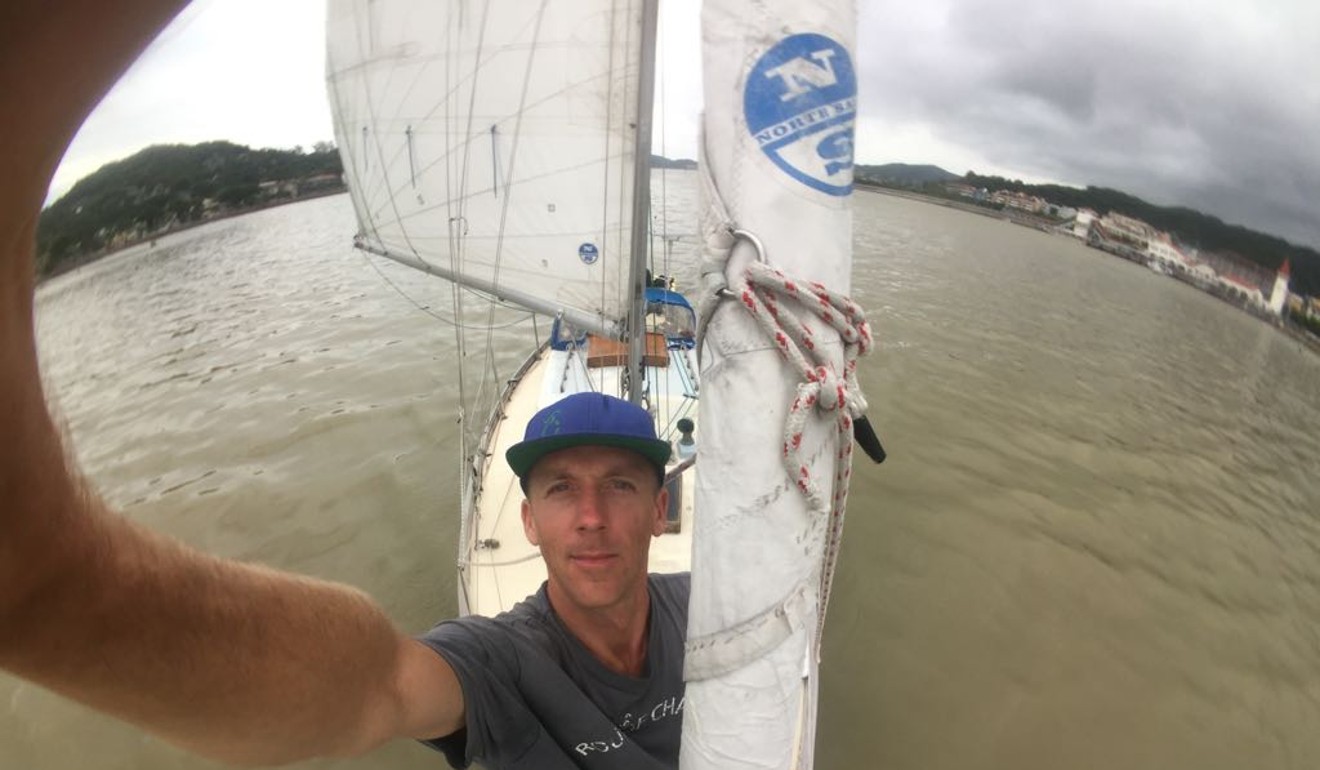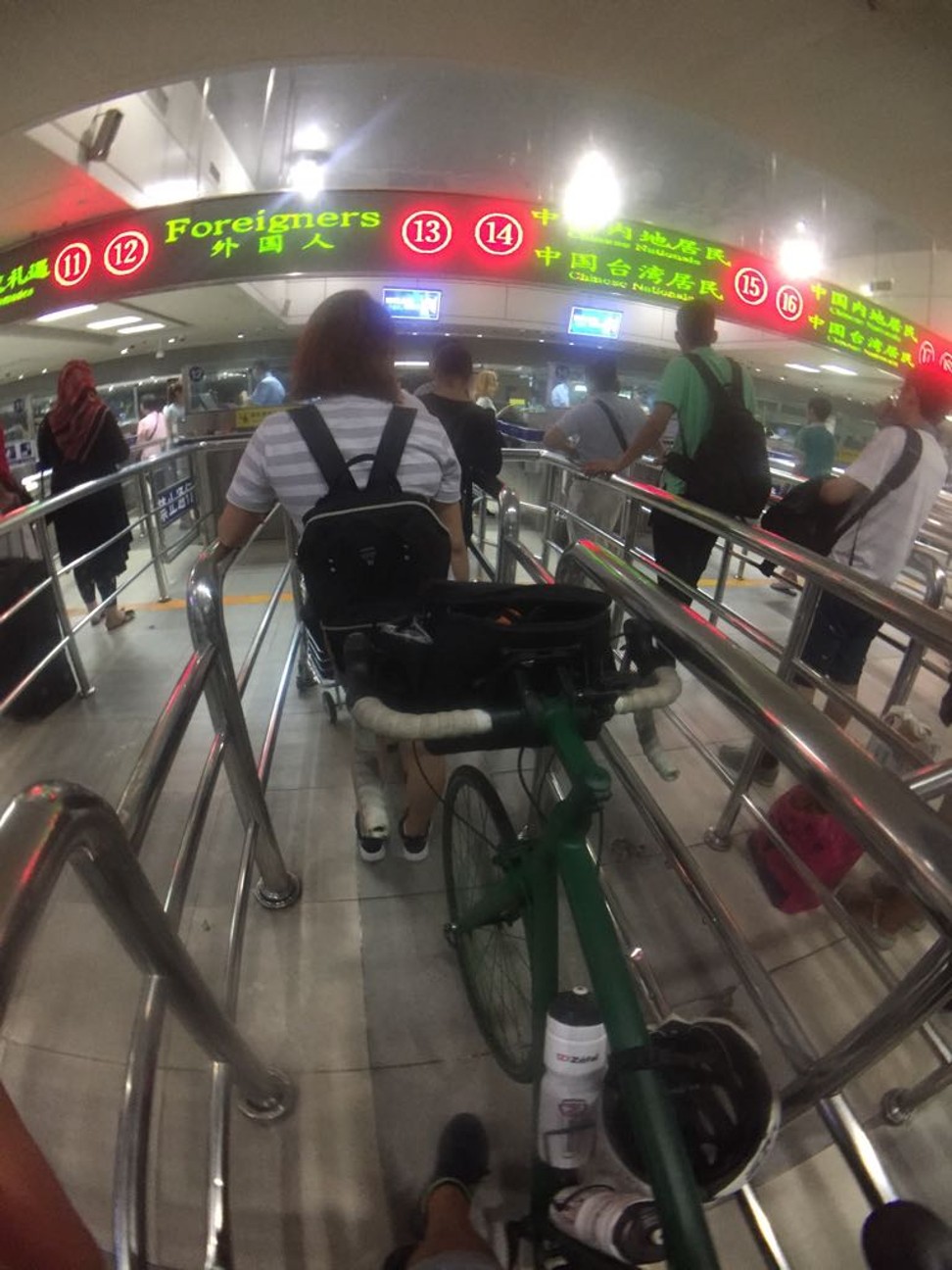
Motorless adventurer runs aground in Macau following ‘ridiculous’ new law requiring fax applications
Not realising he needs to fax ahead to announce his arrival, Markus Pukonen has an ace up his sleeve to convince immigration officials
Who still uses fax? Macau customs for one, as round-the-world explorer Markus Pukonen has found out.
The lack of the ‘ancient’ technology almost foiled the Canadian’s expedition, with his boat running aground navigating a narrow passage into the tiny enclave.
Pukonen, 34, is circumnavigating the world without using a motor. He arrived in Hong Kong last month, having walked, kayaked, rowed, pogoed and sailed west from Toronto. Such is his commitment to motorless travel, he will not even use an escalator.
He sailed to Macau this week, hearing that it would be easier to cross the border with a bike into China than from Hong Kong.
Pukonen had heard reports that if he tried to cross from Hong Kong, they would force him on a bus for the few hundred metres over the border.

But upon arriving in Macau, he found the laws had changed and he could not just show up in a boat.
Worried that he would be forced onto an official motor boat, he ran his yacht aground before he eventually found out they expected him to apply for a boat berth in advance – either in person or via fax.
Pukonen and a fellow Canadian who lives in Hong Kong, David Dosanhj, sailed from Hong Kong on July 1, braving a storm and 30- to 40-knot winds.
“It was exciting, especially as we were navigating through little islands,” Pukonen said.
They arrived in Macau at about 11pm but could not raise the coastguard on their radio, so laid anchor off the southern tip of Macau.

“We’d heard it was easy, and that you just showed up and called the coastguard, but we couldn’t get through to anyone,” Pukonen said.
They were boarded by army officers but managed to get them to leave after convincing them they were genuine adventurers.
Eventually customs officials arrived, but Pukonen was in a constant state of unease that he might be forced onto a motorised boat.
The pair followed the customs boat into a narrow canal between Macau and mainland China, but they ran aground.
“Luckily it was only mud. I was completely panicked that they would tow us out,” Pukonen said. “But we rocked the boat back and forth for a minute – it felt like an hour – and were out again.”

They were then led into an even narrower part of the canal only 50 metres wide and Pukonen was forced to kayak the last section.
Finally at the customs office, they were told they were going to be fined and sent back to Hong Kong.
“It turns out they recently changed the law, and now you can’t just turn up,” Pukonen said. “You have to book a berth in advance. You can do this in person or via fax, which is pretty ridiculous.
“Who’s going to fly there, book in advance in person, then come back to sail? And, fax?! Who has a fax machine these days?”
Pukonen was forced to play his wild card: an official letter from the Canadian government explaining his journey which requests that officials help him.
After 24 hours of waiting – and clearing bureaucratic hurdles with customs, the marine department and the immigration department – he was allowed ashore.

Once in Macau, Pukonen crossed the border into the mainland with relative ease. He is now travelling towards Hanoi on a bike lent to him by Mad Dogs, a Hong Kong-based adventure cycling company founded by Humphrey Wilson, who cycled from the UK to Hong Kong.
Pukonen covered 500km in his first three days, but came to a bridge and was told by officials it was not for bikes, so he had to take a 40km detour.
“I have to accept it was never an option for me, but it’s hard to accept at the time. It looked like an option on the map,” he lamented.

